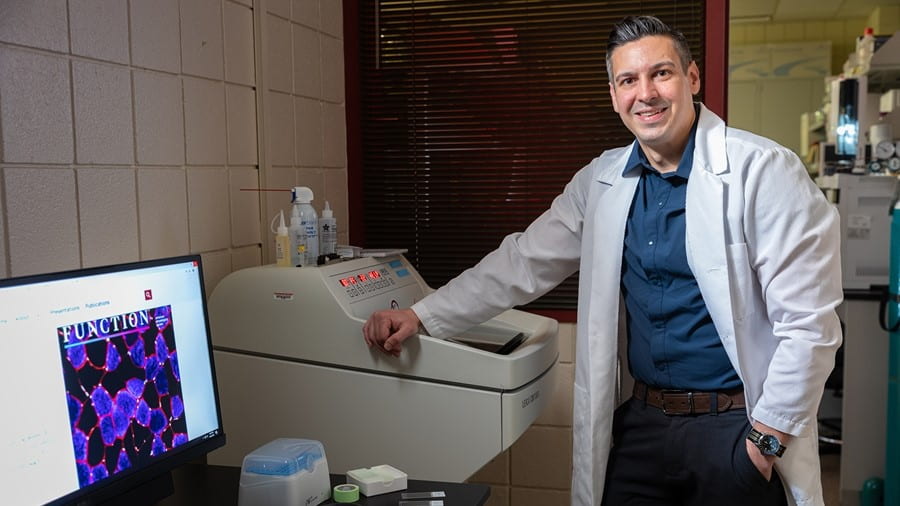The National Institutes of Health awarded $2.5 million to researchers at the University of Arkansas to study how exercise can mitigate the decline of tissue function with aging. Kevin Murach, an assistant professor of exercise science in the College of Education and Health Professions, will serve as the principal investigator.
It’s well established that tissue function declines with age, but exercise can play an important role in slowing the decline of skeletal muscle, the most voluminous tissue in the body. Less well understood is to what degree exercise mitigates that decline and what is actually happening in the muscles on a molecular level.
Murach’s investigation will focus on the role of a transcription factor known as MYC. This protein is one of the four Yamanaka factors (identified as OCT3/4, SOX2, KLF4, and MYC) that can revert highly specified cells (such as a skin cell) back to a stem cell, which is a younger and more adaptable state.
In the correct dosages, inducing the Yamanaka factors throughout the body in rodents can ameliorate some hallmarks of aging in part by mimicking the adaptability that is common to more youthful cells. Of the four factors, MYC is the only one that can be induced by exercising skeletal muscle (as opposed to gene-editing to induce gene expression), but MYC also becomes less responsive to exercise with advancing age.
The NIH grant will allow Murach to continue investigating the role that MYC plays in the functional, metabolic, cellular and molecular plasticity of skeletal muscle throughout the entire lifespan. He hypothesizes that MYC induction in muscle will mimic functional and cellular aspects of exercise adaptation throughout the lifespan and amplify the effects of exercise training. MYC will mediate youthfulness at several molecular levels, including biological aging determined by a DNA methylation “clock” age, which is a way of identifying cellular aging through known markers.
“We’re really focused on this one transcription factor [MYC] that’s exercise responsive,” Murach explained, “and we’re going to manipulate it in different conditions throughout the aging process to see if we can make old muscle appear young again, but also doing so in combination with exercise.”
He added that “this is all in mouse models, but we have evidence from humans that this factor in muscle goes up as well with exercise, but it tends to go up less in aged muscle. And so we think that if we can drive it, we can basically ‘rejuvenate’ muscle and try to get older muscle to appear young again.”
Murach expects that their innovative approaches will serve as a foundation for understanding skeletal muscle mass regulation with aging and provide new directions for exploring what mediates the age-defying effects of exercise.
Professor Nicholas Greene, director of the Exercise Science Research Center, will serve as a co-investigator, as will Wen-Juo Lo, an associate professor of educational statistics and research methods. Kyle Quinn, an associate professor of biomedical engineering who runs the Arkansas Integrative Metabolic Research Center, will provide additional support and resources.


